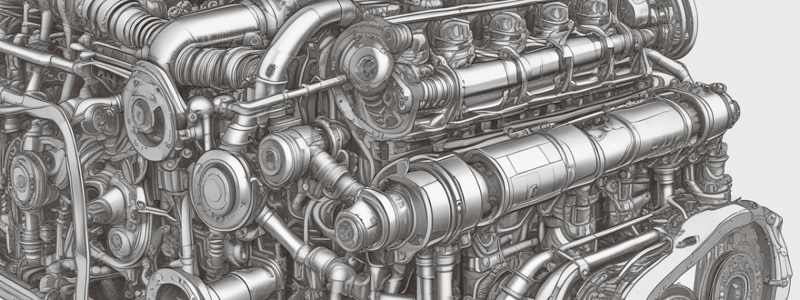Podcast
Questions and Answers
What is the primary function of a valve bridge in an engine?
What is the primary function of a valve bridge in an engine?
- To position the cylinder head casting on the engine block
- To adjust the valve clearance on the cylinder head
- To allow one rocker arm to open both intake and exhaust valves simultaneously (correct)
- To act as a guide pin for the rocker arm
What is the typical purpose of the guide pin on many engines?
What is the typical purpose of the guide pin on many engines?
- To secure the valve bridge to the cylinder head (correct)
- To position the rocker arm on the valve stem
- To rotate the valve stem during engine operation
- To adjust the valve clearance on the cylinder head
What is a characteristic of engines with adjustable valve bridges?
What is a characteristic of engines with adjustable valve bridges?
- They have a non-adjustable valve bridge
- They allow for adjustments to the valve bridge position (correct)
- They are only used in diesel engines
- They have a fixed valve clearance
What is the typical configuration of valves per cylinder on engines that use valve bridges?
What is the typical configuration of valves per cylinder on engines that use valve bridges?
What is the purpose of the rocker arm in relation to the valve bridge?
What is the purpose of the rocker arm in relation to the valve bridge?
Flashcards are hidden until you start studying
Study Notes
Valve Bridges
- Valve bridges, also known as crossheads, are used in cylinder heads with four valves per cylinder.
- The valve bridge spans a pair of intake or exhaust valves, allowing one rocker arm to open both valves simultaneously.
- The valve bridge is typically positioned by a guide pin that is pressed into the cylinder head casting.
- Valve bridges can be either adjustable or non-adjustable, depending on the engine design.
Studying That Suits You
Use AI to generate personalized quizzes and flashcards to suit your learning preferences.




